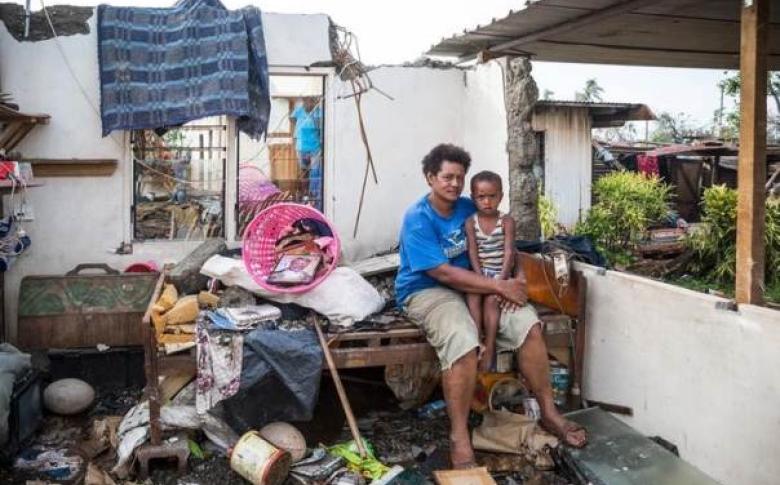Tropical Cyclone Winston Strikes Fiji

ETC supports Government of Fiji to respond to worst tropical storm ever recorded in the Pacific.
Category-five Cyclone Winston tore through Fiji on 20 February, bringing winds of over 320km/h, torrential rain and waves of up to 12 metres high. It is said to be the second-strongest storm to ever make landfall, second only to Super Typhoon Haiyan in the Philippines.
“On Monday, after the curfew expired, we took a recc’y trip north to Rakiraki,” said Mike Fletcher, Emergency Telecommunications Cluster (ETC) focal point in Suva. The team was primarily interested in finding out the condition of telecommunications infrastructure and the general extent of damage. “The destruction kept getting worse and worse as we got closer to the North end of Viti Levu. Whole forests were destroyed. It was like the hills around Sarajevo where artillery barrages had blown off the top of trees; just brown stumps sticking up. It was very surreal.” Many of the towers remained standing, but others were completely gone.
The storm passed east to west, through the Lau Group of islands, skirting the top of Fiji’s main island, Viti Levu where the capital Suva is located. Damage across the East Division is extensive and whole villages destroyed on the island of Koro. At least 42 people have been confirmed dead and some 56,000 people are currently sheltering in evacuation centres.
“We saw maybe 12 schools along the way to Rakiraki and every one had pretty extensive damage; roofs gone, walls caved in,” said Mike. “Some villages were completely wiped out. There was corrugated tin all over the place, even bent around power lines. That amount of tin flying around in cyclone-speed winds is frightening in itself to think about.”
Now, nearly two weeks after the disaster, the Government of Fiji and the National Disaster Management Organisation (NDMO) are strongly leading response and recovery efforts, in collaboration with the humanitarian community.
As global lead of the Emergency Telecommunications Cluster (ETC), the World Food Programme (WFP) is coordinating inter-agency ICT activities on the ground in Fiji in close collaboration with the government. Mike Fletcher, WFP Senior ICT Emergency Preparedness Consultant who was in Suva prior to the cyclone, will soon be joined by Rob Buurveld from WFP Fast IT and Telecommunications Support Team (FITTEST).
The ETC is now focusing on collaborating with the Government of Fiji on the response, identifying solutions to ICT needs. The ETC will assist the NDMO to regain basic and essential communications links where gaps exist and in particular with the outer islands severely impacted by Tropical Cyclone Winston, namely Koro, Taveuni, Vanua Balavu, Cicia, Lakeba in the Northern Lau Group and the Yasawa Group in the East – all in the direct path of Cyclone Winston.
“The government is in the driving seat for this response, calling the shots,” said Mike. “They have been very engaging with the international community and the Pacific Humanitarian Team (PHT). Things are moving in a very systematic and orderly way. If there wasn’t a government and public infrastructure as strong as there is in Fiji, we would be whistling a different tune.”
The ETC plans to provide shared basic voice communications and internet connectivity services to the response community working in up to three common operating areas. The project is initially planned for two months, pending restoration of local infrastructure and requirements of the NDMO and response community.
The ETC is also exploring the need for security communications – HF radio – in outlying islands affected by Tropical Cyclone Winston.
“The Fijian people are so resilient, so gracious, so friendly,” said Mike. “It is very inspiring.”
On 4 March 2016 the Fijian Government and the United Nations have jointly launched a US$38.6 million Humanitarian Emergency Appeal to reach 350,000 people with lifesaving assistance and protection. The Emergency Telecommunications Cluster appealed for US$695,000 to support inter-agency response.